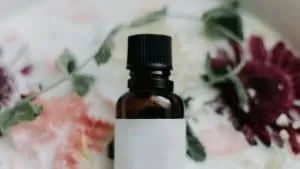Herbal Teas for the Holidays
Herbal Teas are a wonderful and healthy way to enjoy a healthy and healing drink. Herbal tea can be formulated for many reasons including the
FREE SHIPPING ON ORDERS OF $100 OR MORE
Anise Essential Oil possesses the distinctive aroma of black licorice. Although you may not be a fan of black licorice, a single drop or two of Anise Seed Essential Oil can dramatically enhance an otherwise dull blend. It can be useful in diffuser and inhaler blends intended to help ease bronchitis, colds and the flu. It is said to help promote the production of breast milk and stimuate menstruation, but it should be used with caution and avoided in oestrogen-dependent cancers (see safety notes below).
Emotionally, Anise Oil can be calming when used in very small dilutions.
Anise and Star Anise Essential Oils are often grouped together and sometimes are confused with each other as both possess a similar aroma and have similar, but not completely identical properties.
Anise Essential Oil has several safety precautions as noted below.
Botanical Name: Pimpinella anisum
Common Method of Extraction: Steam Distilled
Part Typically Used: Seed
Color: Clear
Consistency: Thin
Perfumery Note: Top
Strength of Initial Aroma: Medium
Aromatic Description: Distinctive scent of licorice. Rich and sweet.
Anise Oil Uses: Bronchitis, colds, coughs, flatulence, flu, muscle aches, rheumatism. [Julia Lawless, The Illustrated Encyclopedia of Essential Oils (Rockport, MA: Element Books, 1995), 60-66.]
Major Constituents:
(E)-Anethole
(+)-Limonene
Estragole
Anisyl alcohol
[B.M. Lawrence, Essential Oils 1988-1991 (Wheaton: Allured Publishing, 1995), 199. R. Tabacchi, J. Garnero, R. Bull, Contribution aletude de la composition de l’huile essentialle de fruits d’anise de Turque. (Rivista Italiana EPPOS 56, 1974), 683-697. K.H. Kubeczka, Essential Oils Analysis by Capillary Gas Chromatography and Carbon-13 NMR Spectoroscopy, Second Edition. (Chichester: Wiley, 2002). Sources cited in Robert Tisserand and Rodney Young, Essential Oil Safety (Second Edition. United Kingdom: Churchill Livingstone Elsevier, 2014), 196.]
Safety Information: Various precautions abound for those with hypersensitive skin or with skin problems. Tisserand and Young recommend a dermal maximum of 2.4%. They indicate that it may inhibit blood clotthing and that it is contraindicated in pregnancy/breastfeeding, endometriosis and estrogen-dependent cancers. Avoid use with children under 5. Avoid use of the oil if it has oxidized. Reading Tisserand and Young’s full profile is recommended. [Robert Tisserand and Rodney Young, Essential Oil Safety (Second Edition. United Kingdom: Churchill Livingstone Elsevier, 2014), 196.]
Important Notes: The essential oil information provided within the Essential Oil Properties & Profiles area is intended for educational purposes only. This data is not considered complete and is not guaranteed to be accurate. The oil photos are intended to represent the typical and approximate color of each essential oil. However, oil color can vary based on harvesting, distillation and other factors. Profiles for several absolutes are included within the directory, and are denoted as such.
General Safety Information: Do not take any oils internally and do not apply undiluted essential oils, absolutes, CO2s or other concentrated essences onto the skin without advanced essential oil knowledge or consultation from a qualified aromatherapy practitioner. If you are pregnant, epileptic, have liver damage, have cancer, or have any other medical problem, use oils only under the proper guidance of a qualified aromatherapy practitioner. Use extreme caution when using oils with children and give children only the gentlest oils at extremely low doses. It is safest to consult a qualified aromatherapy practitioner before using oils with children. For in-depth information on oil safety issues, read Essential Oil Safety by Robert Tisserand and Rodney Young.
Information comes from Aromaweb
Herbal Teas are a wonderful and healthy way to enjoy a healthy and healing drink. Herbal tea can be formulated for many reasons including the

M.D: Most essential oils have anti-inflammatory and antibacterial properties. Before you start using any essential oil, consult with your doctor if you have any questions.

M.D: 100% pure essential oil are compounds extracted from plants only. They capture the plant’s flavor and scent – the essence. Whether you have essential

Bronchitis is an acute respiratory disease caused by viruses. It usually clears up within 2 weeks without any medication. It gets better on its own